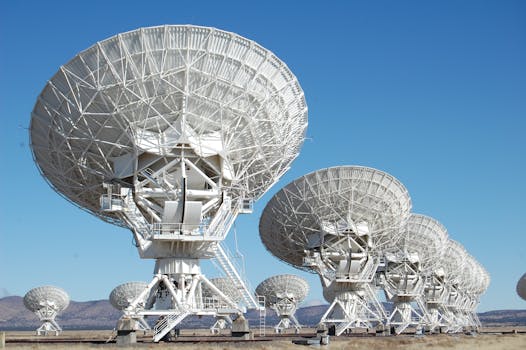
Harnessing the Skies: New Technologies Transforming Satellite Communications
Harnessing the Skies: New Technologies Transforming Satellite Communications is revolutionizing the way we communicate. The satellite communications industry has been around for decades, but recent advancements in technology have transformed the sector, enabling faster, more reliable, and efficient communication services. In this article, we will explore the new technologies that are driving this transformation and their impact on the industry.
The satellite communications industry has traditionally been dominated by large, geostationary satellites that provide broadband connectivity to remote and underserved areas. However, with the advent of new technologies such as satellite constellations, phased arrays, and advanced propulsion systems, the industry is experiencing a significant shift. These new technologies are enabling the development of smaller, more agile satellites that can provide faster and more reliable communication services.
One of the key drivers of this transformation is the development of satellite constellations. These constellations consist of multiple small satellites that work together to provide global coverage and enable real-time communication services. Companies such as OneWeb, SpaceX, and Amazon’s Kuiper Systems are leading the charge in this area, with plans to launch thousands of satellites in the coming years. These constellations will provide a range of services, including broadband connectivity, navigation, and Earth observation.
Satellite Constellations and Their Impact

Satellite constellations are not only providing faster and more reliable communication services, but they are also enabling new use cases such as IoT connectivity, smart cities, and precision agriculture. For example, satellite constellations can provide real-time connectivity to IoT devices, enabling the monitoring and control of remote assets. They can also provide high-speed connectivity to smart cities, enabling the efficient management of urban infrastructure.
In addition to satellite constellations, other new technologies are also driving the transformation of the satellite communications industry. Phased arrays, for example, are enabling the development of more efficient and compact antennas that can be used in a range of applications, from satellite communications to radar systems. Advanced propulsion systems are also being developed, enabling satellites to maneuver more efficiently and extend their lifespan.
Challenges and Opportunities

While the new technologies driving the transformation of the satellite communications industry present many opportunities, they also pose significant challenges. One of the key challenges is the need for greater frequency coordination and interference management. As the number of satellites in orbit increases, the risk of interference and frequency conflicts also increases. To address this challenge, companies and regulatory bodies are working together to develop new standards and guidelines for frequency coordination and interference management.
Another challenge facing the industry is the need for more efficient and sustainable satellite design. As the number of satellites in orbit increases, the amount of space debris also increases, posing a significant risk to operational satellites and other space-based assets. To address this challenge, companies are developing more sustainable satellite designs, such as satellites that can be easily de-orbited and destroyed at the end of their lifespan.
Conclusion

In conclusion, the satellite communications industry is undergoing a significant transformation, driven by new technologies such as satellite constellations, phased arrays, and advanced propulsion systems. These technologies are enabling faster, more reliable, and efficient communication services, and are opening up new use cases such as IoT connectivity, smart cities, and precision agriculture. While the industry faces significant challenges, including the need for greater frequency coordination and more sustainable satellite design, the opportunities presented by these new technologies are vast and exciting.
See more:







